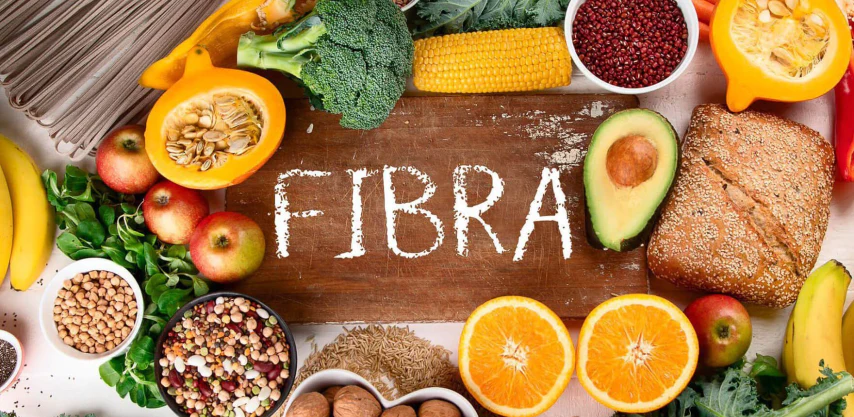
What Is Fibra and Why Is It Essential?
Fibra, also known as dietary fiber, is an essential nutrient found in plant-based foods. It is a type of carbohydrate that the body cannot digest, making it crucial for various bodily functions, especially digestion. Unlike other nutrients, fibras passes through the digestive system mostly intact, aiding in the smooth functioning of the digestive tract.
Fibra is classified into two main types:
- Soluble Fibras: Dissolves in water to form a gel-like substance, helping regulate blood sugar levels and lower cholesterol.
- Insoluble Fibras: Adds bulk to stool and promotes regular bowel movements, preventing constipation.
The importance of fibra extends beyond digestion. It helps maintain healthy cholesterol levels, supports weight management, and fosters overall well-being. Incorporating fibras into your daily diet can reduce the risk of chronic diseases, including heart disease and diabetes.
The Two Types of Fibra: Soluble and Insoluble
What Is Soluble Fibra and How Does It Help?
Soluble fibras dissolves in water and slows down the digestion process, which helps your body absorb nutrients more effectively. This type of fibras is particularly beneficial for heart health and blood sugar control. Foods like oats, apples, citrus fruits, and legumes are excellent sources of soluble fibras.
Key Benefits of Soluble Fibra:
- Reduces bad cholesterol (LDL).
- Controls blood sugar levels, especially for those with diabetes.
- Improves nutrient absorption.
- Keywords Used: Soluble fibras, Digestive wellness, Fibra health benefits.
What Is Insoluble Fibra and Why Is It Important?
Insoluble fibras is like a natural cleanser for your intestines. It doesn’t dissolve in water but adds bulk to your stool, promoting healthy digestion and preventing constipation. Foods like whole grains, nuts, and vegetables like carrots and broccoli are rich in insoluble fibras.
Key Benefits of Insoluble Fibra’s:
- Promotes bowel regularity.
- Prevents digestive issues like constipation.
- Supports overall colon health.

The Amazing Health Benefits of Fibra
Fibra’s offers a wide range of health benefits that contribute to overall well-being. Below are some of the key advantages:
How Fibra Supports Gut Health
Fibra acts as a prebiotic, feeding the good bacteria in your gut. A healthy gut microbiota improves digestion, strengthens the immune system, and prevents gastrointestinal disorders like bloating and constipation. Soluble fibras, in particular, helps nourish the gut bacteria, enhancing gut health.
Fibra’s and Weight Management
High-fibra foods are known to increase feelings of fullness, which helps reduce overall calorie intake. By incorporating fibras-rich foods into your meals, you can curb overeating and support healthy weight loss.
Examples of Fibra‘s-Rich Foods for Weight Management:
- Lentils and chickpeas.
- Whole-grain bread and pasta.
- Fruits like berries and oranges.
- Keywords Used: Foods high in fibra’s for weight loss, Fibra and weight loss, Weight management.
Heart Health and Cholesterol Control
Fibra’s plays a significant role in reducing the risk of heart disease by lowering bad cholesterol levels. Soluble fibras binds with cholesterol particles and removes them from the body, leading to improved heart health.
Top Fibra-Rich Foods to Include in Your Diet
Whole Grains
Whole grains like quinoa, oats, barley, and brown rice are packed with fibras and essential nutrients. They not only improve digestion but also provide energy and support heart health.
Fruits and Vegetables
Fruits such as apples, oranges, and bananas, and vegetables like broccoli, spinach, and carrots, are excellent sources of fibra. They are easy to incorporate into meals and snacks.
Legumes and Nuts
Legumes, including beans, lentils, and chickpeas, are among the most fibra-dense foods. Similarly, nuts like almonds and walnuts provide both fibras and healthy fats.
How to Incorporate Fibra‘s Into Your Daily Routine
Incorporating fibra into your diet doesn’t have to be complicated. Follow these practical tips:
- Start your day with a high-fibras breakfast like oatmeal topped with fresh fruits.
- Choose whole-grain options for bread, rice, and pasta.
- Snack on fibras-rich foods like nuts, seeds, and fruits.
- Include more vegetables in your meals, such as adding a side salad.
- If needed, use fibra’s supplements to meet your daily requirement.
Common Misconceptions About Fibra‘s
Is Too Much Fibra Bad for You?
While fibras is beneficial, overconsumption can lead to bloating, gas, and stomach cramps. Gradually increasing fibra intake and drinking plenty of water can help avoid these issues.
Can Processed Foods Provide Enough Fibra’s?
Processed foods with added fibra may not offer the same health benefits as natural sources. It’s always better to consume fibras from whole foods like fruits, vegetables, and grains.
FAQs
- What are the best foods for increasing fibra’s intake?
Oats, quinoa, apples, broccoli, lentils, and nuts are excellent natural sources of fibra’s. These foods not only improve digestion but also support overall health. - How much fibra’s should I consume daily?
The recommended daily fibra intake is 25-30 grams for adults, achieved through a balanced diet of fruits, vegetables, grains, and legumes. - What is the difference between soluble and insoluble fibras?
Soluble fibra dissolves in water, improving cholesterol and blood sugar levels, while insoluble fibras adds bulk to stool and aids digestion. - Can fibra’s help with weight management?
Yes, fibras promotes satiety, reducing calorie intake and helping with weight loss. Fibra-rich foods like beans and oats are particularly effective. - Why is fibra important for heart health?
Fibras helps reduce bad cholesterol levels, improving cardiovascular health and lowering the risk of heart disease.






